#historic building materials
Explore tagged Tumblr posts
Text
the last operating intamin bobsled closed september of last year and intamin removed the model from the website








#coaster tag#ONE OF THE FIRST RIDE MODELS FROM INTAMIN GONE FOREVER#AUGHHHH#THEY WERE UNIQUE TOO#THEY DIDNT EVEN HAVE A REAL TRACK#THEY WERE JUST BOBSLEDS#six flags great escape why do you do this to me#gravity group is great and all#but alpine bobsleds was a historical ride#fuckkkkk#i wont even be able to archive building material for it either#pain and suffering on planet autism
5 notes
·
View notes
Text
I wish I could post some of my photography from today, but it's a bit too specific so I don't wanna dox myself shkfkgkg but ahhhh man I love taking pics whenever I go to the city 🥰
#i love taking pics when im w other people#cause theres a group mentality w taking pics yknow?#<- like if you see someone take a pic of smth your brain is automatically like 'ah! i should take a pic too!!'#but i picked my phone particularly for the camera#so inevitably the other person always ends up being like#'ill leave the photography to you. send the pics later?'#the pics i took today are such good wallpaper material#but unfortunately im p attached to my f1 backgrounds#but my friend said they were good wallpaper material#and i finally got back home and checked and ahhhh not to brag but my framing is so good :)#*also abt my day out 🤭#i love classical music and its so cool seeing it live BUT#unless its a loud dramatic piece(ex. Holst's Mars) or one you know pretty well#oh my god it puts me to sleep i feel so bad 😭#its just too cozy and dark in the concert hall and i kept feeling myself drifting off#also i will say. i usually think that: European city architecture > american city architecture#but theres some really beautiful historic buildings in my city#and i realize its really silly for me to think that theres no great sights in america bcs#i get that same 'wow' feeling whenever i see certain buildings here#catie.rambling.txt
7 notes
·
View notes
Text
Good choice for an upstanding roegadyn husband for Frog to bring home to her parents to impress them: Rammbroes
Hilarious choice for bringing home an upstanding roegadyn husband to alarm and frighten her parents: Rasho the captain of the confederacy in the Ruby Sea.
#the trouble with having a WoL with a well adjusted home life and living parents#is sometimes you think 'hmm they would probably still have something to say about her marrying an elezen#even if he were the leader of Ishgard'#'I must now evaluate every roegadyn man of a certain standing for potential parent pleasing husband quality'#idk maybe this is just an elezen/hyur/roegadyn problem and the world building for other races feels less analagous#to recent historical societies where this would be important#although woe betide if you have a Sharlayan OC#they definitely have roegadyn culture first and foremost#in terms of like... day to day social structures#I'd say the hyur/elezen/roe non-specific 1800s to modern societal expectations#but roegadyn founded Sharlayan's society and you can see how it mirrors Limsa first especially with boats and arcanists#point is your sharlayan moon catgirl might still have to bring back a respectable husband to impress the parents#in which case you could do worse than Rammbroes :P#ffxiv#I am just rambling#I haven't not skipped the ruby sea cutscenes on alts literally ever so this is the first time watching them since Frog was first here#they're REALLY long and back to back in my defence#also Gosetsu would be perfect parent pleasing husband material but like however old Rammbroes is Gosetsu has at least 2 decades on him#going from 'hmm' to 'Frog MUST see her own grandpas in him and that's that'
17 notes
·
View notes
Text
just finished fully reading one of my reference books. Just bought three more
#these'll be great though#the book i finished was about life in the medieval village#and then i've read between 20-60% of 5 other books about celtic history and art and mythology and druidism#so i've actually read a lot more than what this post originally looks like. but i havent actually FINISHED all these books#just gotten a good chunk done and will go back and finish at my leisure#the ones I just purchased are about the Swiss Alps history and environment thou which will help build the BG to this story#also I've been working on my timeline throughout all this reading#and it's SO FUCKING CLOSE to being done#And when I'm actually done (and/ore close to being done) reading all these reference materials i think i'll be finished w my outline#cause each book has given me something to plug into the timeline#the medieval village book gave me an idea for a 'tavern' scene#Tavern is in quotations cause in the 12th century a Tavern was just the house of someone who made enough ale to sell to their neighbors#but we'll now be getting a drunken brawl in this comic#and the book also made me more familiar w the feudal/manoral system so I might actually have that be a background element#originally i was gonna ignore it. But i can actually fit Rudd and Alma's backstory around a more historically accurate social structure#and then the mythology book gave me a way to connect two different scenes together in such a deliciously messy way#with the help of two different deities#anyways#while it can feel like a chore sometimes#reading all these refs has also been really fun and interesting
3 notes
·
View notes
Text
Arches: The Timeless Marvels of Architecture
An arch, in its most fundamental form, is a simple structure that has stood the test of time. It has both defied and defined our understanding of architecture, standing at the intersection of beauty and strength. These structural forms, traced back to ancient civilizations, continue to marvel us with their timeless appeal and enduring resilience. Britannica An arch is essentially a curved…
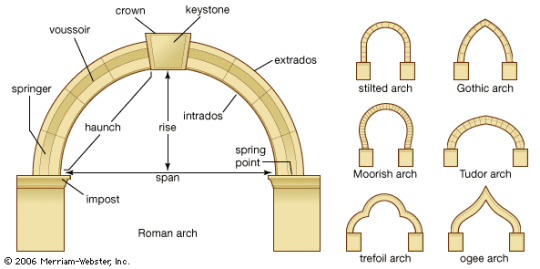
View On WordPress
#Antoni Gaudí#Arch Types#Arches#Architectural Aesthetics#Architectural Design#Architectural Evolution#Architectural History#Architectural Innovation#Architecture#building design#civil engineering#Construction materials#Cultural Symbols#Gothic Architecture#Historical Structures#Islamic Architecture#Load Bearing Structures#Modern Architecture#Roman Architecture#structural engineering
2 notes
·
View notes
Text
#historic restoration services#Historic Preservation and Restoration#Historic building preservation services#repair or restore historic building materials
2 notes
·
View notes
Photo

Library - Open Family room library - large cottage open concept room library idea with medium tone wood flooring, yellow walls, a regular fireplace, a stone fireplace, and no television.
#building materials#dutch colonial style#west chester pennsylvania#historic preservation#general contractor
1 note
·
View note
Text
am i the only one who thought that windclan lived in basically a desert? it literally took reading winds of change a couple weeks ago to realize that a moor was basically a fucking field. with grass everywhere and shit. 10 year old me apparently didn't bother to google that
#warrior cats#windclan#like i genuinely thought they lived in the sand.#now everything makes sense because how tf would they have elaborate tunnel systems in sand#which is historically a bad building material#its been like a decade since i started reading these books and i never google image searched the word moor until now#in my defense if you look at the og territory maps it does look deserty/dune-like#filed under: op was/is a dumbass
6 notes
·
View notes
Text
In the past fifty years, fantasy’s greatest sin might be its creation of a bland, invariant, faux-Medieval European backdrop. The problem isn’t that every fantasy novel is set in the same place: pick a given book, and it probably deviates somehow. The problem is that the texture of this place gets everywhere.
What’s texture, specifically? Exactly what Elliot says: material culture. Social space. The textiles people use, the jobs they perform, the crops they harvest, the seasons they expect, even the way they construct their names. Fantasy writing doesn’t usually care much about these details, because it doesn’t usually care much about the little people – laborers, full-time mothers, sharecroppers, so on. (The last two books of Earthsea represent LeGuin’s remarkable attack on this tendency in her own writing.) So the fantasy writer defaults – fills in the tough details with the easiest available solution, and moves back to the world-saving, vengeance-seeking, intrigue-knotting narrative. Availability heuristics kick in, and we get another world of feudal serfs hunting deer and eating grains, of Western name constructions and Western social assumptions. (Husband and wife is not the universal historical norm for family structure, for instance.)
Defaulting is the root of a great many evils. Defaulting happens when we don’t think too much about something we write – a character description, a gender dynamic, a textile on display, the weave of the rug. Absent much thought, automaticity, the brain’s subsconscious autopilot, invokes the easiest available prototype – in the case of a gender dynamic, dad will read the paper, and mom will cut the protagonist’s hair. Or, in the case of worldbuilding, we default to the bland fantasy backdrop we know, and thereby reinforce it. It’s not done out of malice, but it’s still done.
The only way to fight this is by thinking about the little stuff. So: I was quite wrong. You do need to worldbuild pretty hard. Worldbuild against the grain, and worldbuild to challenge. Think about the little stuff. You don’t need to position every rain shadow and align every tectonic plate before you start your short story. But you do need to build a base of historical information that disrupts and overturns your implicit assumptions about how societies ‘ordinarily’ work, what they ‘ordinarily’ eat, who they ‘ordinarily’ sleep with. Remember that your slice of life experience is deeply atypical and selective, filtered through a particular culture with particular norms. If you stick to your easy automatic tendencies, you’ll produce sexist, racist writing – because our culture still has sexist, racist tendencies, tendencies we internalize, tendencies we can now even measure and quantify in a laboratory. And you’ll produce narrow writing, writing that generalizes a particular historical moment, its flavors and tongues, to a fantasy world that should be much broader and more varied. Don’t assume that the world you see around you, its structures and systems, is inevitable.
We... need worldbuilding by Seth Dickinson
#seth dickinson#worldbuilding#writing#ten.txt#if you're reading this go read the traitor baru cormorant#neowwww
10K notes
·
View notes
Text
on neuschwanstein castle (part 1)
This is an essay in two parts.

Neuschwanstein Concept Drawing by the stage designer (!!) Christian Jank (1869).
There exist in architecture clear precedents to the McMansion that have nothing to do with suburban real estate. This is because “McMansionry” (let’s say) has many transferable properties. Among them can be included: 1) a diabolical amount of wealth that must be communicated architecturally in the most frivolous way possible, 2) a penchant for historical LARPing primarily informed by media (e.g. the American “Tuscan kitchen”) and 3) the execution of historical styles using contemporary building materials resulting in an aesthetic affect that can be described as uncanny or cheap-looking. By these metrics, we can absolutely call Neuschwanstein Castle, built by the architect Eduard Riedel for King Ludwig II of Bavaria, a McMansion.
Constructed from 1869 through 1886 – the year of Ludwig’s alleged suicide after having been ousted and declared insane – the castle cost the coffers of the Bavarian state and Ludwig himself no fewer than 6.2 million German gold marks. (That's an estimated 47 million euros today.) The castle's story is rife with well-known scandal. I'm sure any passing Swan Enthusiast is already familiar with Ludwig’s financial capriciousness, his called-off marriage and repressed homosexuality, his parasocial obsession with Richard Wagner, his complete and total inability to run his country, and his alleged "madness," as they used to call it. All of these combine to make Neuschwanstein inescapable from the man who commissioned it -- and the artist who inspired it. Say what you like about Ludwig and his building projects, but he is definitely remembered because of them, which is what most monarchs want. Be careful what you wish for.

Neuschwanstein gatehouse.
How should one describe Neuschwanstein architecturally? You’d need an additional blog. Its interiors alone (the subject of the next essay) range from Neo-Baroque to Neo-Byzantine to Neo-Gothic. There are many terms that can loosely define the palace's overall style: eclecticism, medieval revivalism, historicism, chateauesque, sclerotic monarchycore, etc. However, the the most specific would be what was called "castle Romanticism" (Burgenromantik). The Germans are nothing if not literal. Whatever word you want to use, Neuschwanstein is such a Sistine Chapel of pure sentimentality and sugary kitsch that theme park architecture – most famously, Disney's Cinderella’s castle itself – owes many of its medieval iterations to the palace's towering silhouette.
There is some truth to the term Burgenromantik. Neuschwanstein's exterior is a completely fabricated 19th century storybook fantasy of the Middle Ages whose precedents lie more truthfully in art for the stage. As a castle without fortification and a palace with no space for governance, Neuschwanstein's own program is indecisive about what it should be, which makes it a pretty good reflection of Ludwig II himself. To me, however, it is the last gasp of a monarchy whose power will be totally extinguished by that same industrial modernity responsible for the materials and techniques of Neuschwanstein's own, ironic construction.
In order to understand Neuschwanstein, however, we must go into two subjects that are equally a great time for me: 19th century medievalism - the subject of this essay - and the opera Lohengrin by Richard Wagner, the subject of the next. (1)
Part I: Medievalisms Progressive and Reactionary

The Middle Ages were inescapable in 19th century Europe. Design, music, visual art, theater, literature, and yes, architecture were all besotted with the stuff of knights and castles, old sagas, and courtly literature. From arch-conservative nationalism to pro-labor socialism, medievalism's popularity spanned the entire political spectrum. This is because it owes its existence to a number of developments that affected the whole of society.
In Ludwig’s time, the world was changing in profound, almost inconceivable ways. The first and second industrial revolutions with their socioeconomic upheavals and new technologies of transport, manufacturing, and mass communication, all completely unmade and remade how people lived and worked. This was as true of the average person as it was of the princes and nobles who were beginning to be undermined by something called “the petit bourgeoisie.”
Sustenance farming dwindled and wage labor eclipsed all other forms of working. Millions of people no longer able to make a living on piecemeal and agricultural work flocked to the cities and into the great Molochs of factories, mills, stockyards, and mines. Families and other kinship bonds were eroded or severed by the acceleration of capitalist production, large wars, and new means of transportation, especially the railroad. People became not only alienated from each other and from their labor in the classical Marxist sense but also from the results of that labor, too. No longer were chairs made by craftsmen or clothes by the single tailor -- unless you could afford the bespoke. Everything from shirtwaists to wrought iron lamps was increasingly mass produced - under wretched conditions, too. Things – including buildings – that were once built to last a lifetime became cheap, disposable, and subject to the whimsy of fashion, sold via this new thing called “the catalog.”

William Morris' painting Le Belle Iseult (1868).
Unsurprisingly, this new way of living and working caused not a little discontent. This was the climate in which Karl Marx wrote Capital and Charles Dickens wrote A Christmas Carol. More specific to our interests, however, is a different dissenter and one of the most interesting practitioners of medievalism, the English polymath William Morris.
A lover of Arthurian legend and an admirer of the architect and design reformer John Ruskin, Morris was first trained in the office of architect G. E. Street, himself a die-hard Gothic Revivalist. From the very beginning, the Middle Ages can be found everywhere in Morris' work, from the rough-hewn qualities of the furniture he helped design to the floral elements and compositions of the art nouveau textiles and graphics he's most famous for -- which, it should be said, are reminiscent of 15th century English tapestries. In addition to his design endeavors, Morris was also a gifted writer and poet. His was a profound love for medieval literature, especially Norse sagas from Iceland. Some of these he even translated including the Volsunga Saga -- also a preoccupation of Wagner's. Few among us earn the title of polymath, but Morris' claim to it is undeniable. Aside from music, there really wasn't any area of creative life he didn't touch.
However, Morris' predilection for the medieval was not just a personal and aesthetic fascination. It was also an expression of his political rejection of the capitalist mode of production. As one of the founders of the English Arts & Crafts Movement, Morris called for a rejection of piecemeal machine labor, a return to handicraft, and overall to things made well and made with dignity. While this was and remains a largely middle class argument, one that usually leads down the road of ethical consumption, Morris was right that capitalism's failing of design and architecture did not just lie with the depreciated quality of goods, but the depreciated quality of life. His was the utopian call to respect both the object and the laborer who produced it. To quote from his 1888 essay called "The Revival of Architecture," Morris dreamed of a society that "will produce to live and not live to produce, as we do." Indeed, in our current era of AI Slop, there remains much to like about the Factory Slop-era call to take back time from the foreman's clock and once more make labor an act of enjoyable and unalienated creativity. Only now it's about things like writing an essay.
I bother to describe Morris at length here for a number of reasons. The first is to reiterate that medievalism's popularity was largely a response to socioeconomic changes. Additionally, since traditionalism - in Ludwig's time and in ours - still gets weaponized by right-wing losers, it's worth pointing out that not all practitioners of medievalism were politically reactionary in nature. However – and I will return to this later – medievalism, reactionary or not, remains inescapably nostalgic. Morris is no exception. While a total rejection of mass produced goods may seem quixotic to us now, when Morris was working, the era before mass industrialization remained at the fringes of living memory. Hence the nostalgia is perhaps to be expected. Unfortunately for him and for us, the only way out of capitalism is through it.
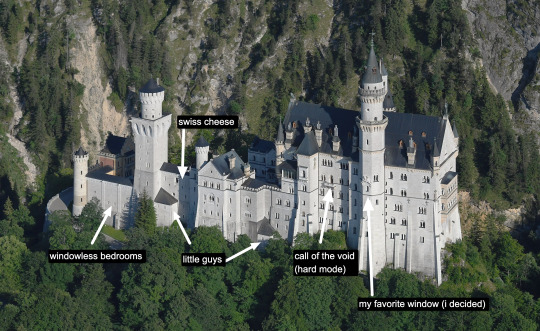
To return again to the big picture: whether one liked it or not, the old feudal world was done. Only its necrotic leftovers, namely a hereditary nobility whose power would run out of road in WWI, remained. For Ludwig purposes, it was a fraught political time in Bavaria as well. Bavaria, weird duck that it was, remained relatively autonomous within the new German Reich. Despite the title of king, Ludwig, much to his chagrin - hence the pathetic Middle Ages fantasizing - did not rule absolutely. His was a constitutional monarchy, and an embattled one at that. During the building of Neuschwanstein, the king found himself wedged between the Franco-Prussian War and the political coup masterminded by Otto von Bismarck that would put Europe on the fast track to a global conflict many saw as the atavistic culmination of all that already violent modernity. No wonder he wanted to hide with his Schwans up in the hills of Schwangau.
The very notion of a unified German Reich (or an independent Kingdom of Bavaria) was itself indicative of another development. Regardless if one was liberal or conservative, a king, an artist or a shoe peddler, the 19th century was plagued by the rise of modern nationalism. Bolstered by new ideas in "medical" “science,” this was also a racialized nationalism. A lot of emotional, political, and artistic investment was put into the idea that there existed a fundamentally German volk, a German soil, a German soul. This, however, was a universalizing statement in need of a citation, with lots of political power on the line. Hence, in order to add historical credence to these new conceptions of one’s heritage, people turned to the old sources.
Within the hallowed halls of Europe's universities, newly minted historians and philologists scoured medieval texts for traces of a people united by a common geography and ethnicity as well as the foundations for a historically continuous state. We now know that this is a problematic and incorrect way of looking at the medieval world, a world that was so very different from our own. A great deal of subsequent medieval scholarship still devotes itself to correcting for these errors. But back then, such scholarly ethics were not to be found and people did what they liked with the sources. A lot of assumptions were made in order to make whatever point one wanted, often about one's superiority over another. Hell, anyone who's been on Trad Guy Deus Vult Twitter knows that a lot of assumptions are still made, and for the same purposes.(2)
Meanwhile, outside of the academy, mass print media meant more people were exposed to medieval content than ever before. Translations of chivalric romances such as Wolfgang von Eschenbach’s Parzival and sagas like the Poetic Edda inspired a century’s worth of artists to incorporate these characters and themes into their work. This work was often but of course not always nationalistic in character. Such adaptations for political purposes could get very granular in nature. We all like to point to the greats like William Morris or Richard Wagner (who was really a master of a larger syncretism.) But there were many lesser attempts made by weaker artists that today have an unfortunate bootlicking je nais se quoi to them.
I love a minor tangent related to my interests, so here's one: a good example of this nationalist granularity comes from Franz Grillparzer’s 1823 pro-Hapsburg play König Ottokars Glück und Ende, which took for its source a deep cut 14th century manuscript called the Styrian Rhyming Chronicle, written by Ottokar Aus Der Gaul. The play concerns the political intrigue around King Ottokar II of Bohemia and his subsequent 1278 defeat at the hands of Grillparzer’s very swagged out Rudolf of Habsburg. Present are some truly fascinating but extremely obscure characters from 13th Holy Roman Empire lore including a long-time personal obsession of mine, the Styrian ministerial and three-time traitor of the Great Interregnum, Frederick V of Pettau. But I’m getting off-topic here. Let's get back to the castle.

The Throne Room at Neuschwanstein
For architecture, perhaps the most important development in spreading medievalism was this new institution called the "big public museum." Through a professionalizing field of archaeology and the sickness that was colonialist expansion, bits and bobs of buildings were stolen from places like North Africa, Egypt, the Middle East, and Byzantium, all of which had an enormous impact on latter 19th century architecture. (They were also picked up by early 20th century American architects from H. H. Richardson to Louis Sullivan.) These orientalized fragments were further disseminated through new books, monographs, and later photography.
Meanwhile, developments in fabrication (standardized building materials), construction (namely iron, then steel) and mass production sped things up and reduced costs considerably. Soon, castles and churches in the image of those that once took decades if not a century to build were erected on countless hillsides or in little town squares across the continent. These changes in the material production of architecture are key for understanding "why Neuschwanstein castle looks so weird."

Part of what gives medieval architecture its character is the sheer embodiment of labor embedded in all those heavy stones, stones that were chiseled, hauled, and set by hand. The Gothic cathedral was a precarious endeavor whose appearance of lightness was not earned easily, which is why, when writing about their sublimity, Edmund Burke invoked not only the play of light and shadow, but the sheer slowness and human toil involved.
This is, of course, not true of our present estate. Neuschwanstein not only eschews the role of a castle as a “fortress to be used in war” (an inherently stereotomic program) but was erected using contemporary materials and techniques that are simply not imbued with the same age or gravitas. Built via a typical brick construction but clad in more impressive sandstone, it's all far too clean. Neuschwanstein's proportions seem not only chaotic - towers and windows are strewn about seemingly on a whim - they are also totally irreconcilable with the castle's alleged typology, in part because we know what a genuine medieval castle looks like.
Ludwig's palace was a technological marvel of the industrial revolution. Not only did Neuschwanstein have indoor plumbing and central heat, it also used the largest glass windows then in manufacture. It's not even an Iron Age building. The throne room, seen earlier in this post, required the use of structural steel. None of this is to say that 19th century construction labor was easy. It wasn't and many people still died, including 30 at Neuschwanstein. It was, however, simply different in character than medieval labor. For all the waxing poetic about handiwork, I’m sure medieval stonemasons would have loved the use of a steam crane.
It's true that architectural eclecticism (the use of many styles at once) has a knack for undermining the presumed authenticity or fidelity of each style employed. But this somewhat misunderstands the crime. The thing about Neuschwanstein is that its goal was not to be historically authentic at all. Its target realm was that of fantasy. Not only that, a fantasy informed primarily by a contemporary media source. In this, it could be said to be more architecturally successful.

The fantasy of medievalism is very different than the truth of the Middle Ages. As I hinted at before, more than anything else, medievalism was an inherently nostalgic movement, and not only because it was a bedrock of so much children's literature. People loved it because it promised a bygone past that never existed. The visual and written languages of feudalism, despite it being a terrible socioeconomic system, came into vogue in part because it wasn't capitalism. We must remember that the 19th century saw industrial capitalism at its newest and rawest. Unregulated, it destroyed every natural resource in sight and subjected people, including children, to horrific labor conditions. It still does, and will probably get worse, but the difference is, we're somewhat used to it by now. The shock's worn off.
All that upheaval I talked about earlier made people long for a simplicity they felt was missing. This took many different forms. The rapid advances of secular society and the incursion of science into belief made many crave a greater religiosity. At a time when the effects of wage labor on the family had made womanhood a contested territory, many appeals were made to a divine and innocent feminine a la Lady Guinevere. Urbanization made many wish for a quieter world with less hustle and bustle and better air. These sentiments are not without their reasons. Technological and socioeconomic changes still make us feel alienated and destabilized, hence why there are so many medieval revivals even in our own time. (Chappell Roan of Arc anyone?) Hell, our own rich people aren't so different from Ludwig either. Mark Zuckerburg owns a Hawaiian island and basically controls the fates of the people who live there lord-in-the-castle-style.

Given all this, it's not surprising that of the products of the Middle Ages, perhaps chivalric romance was and remains the most popular. While never a real depiction of medieval life (no, all those knights were not dying on the behalf of pretty ladies), such stories of good men and women and their grand adventures still capture the imaginations of children and adults alike. (You will find no greater fan of Parzival than yours truly.) It's also no wonder the nature of the romance, with its paternalistic patriarchy, its Christianity, its sentimentality around courtly love, and most of all its depiction of the ruling class as noble and benevolent – appealed to someone like Ludwig, both as a quirked-up individual and a member of his class.
It follows, then, that any artist capable of synthesizing all these elements, fears, and desires into an aesthetically transcendent package would've had a great effect on such a man. One did, of course. His name was Richard Wagner.
In our next essay, we will witness one of the most astonishing cases of kitsch imitating art. But before there could be Neuschwanstein Castle, there had to be this pretty little opera called Lohengrin.
---
(1) If you want to get a head start on the Wagner stuff, I've been writing about the Ring cycle lately on my Substack: https://www.late-review.com/p/essays-on-wagners-ring-part-1-believing
(2) My favorite insane nationalist claim comes from the 1960s, when the Slovene-American historian Joseph Felicijan claimed that the US's democracy was based off the 13th century ritual of enthronement practiced by the Dukes of Carinthia because Thomas Jefferson owned a copy of Jean Bodin's Les six livres de la Republique (1576) in which the rite was mentioned. For more information, see Peter Štih's book The Middle Ages Between the Alps and the Northern Adriatic (p. 56 for the curious.)
If you like this post and want more like it, support McMansion Hell on Patreon for as little as $1/month for access to great bonus content including a discord server, extra posts, and livestreams.
Not into recurring payments? Try the tip jar! Student loans just started back up!
#architecture#design#mcmansion#mcmansions#bad architecture#neuschwanstein#wagner#essay#medievalism#19th century
5K notes
·
View notes
Text
10 World-Building Aspects You Probably Overlooked
When crafting a fictional world, it's easy to focus on the big picture—epic battles, grand landscapes, and memorable characters. However, it’s also important to flesh out your world-building to create a ‘real’ world. Some aspects to consider when world-building are:
1. Local Cuisine
Consider the types of food your characters eat and how it reflects their culture, geography, and economy. Unique dishes can reveal societal values and local ingredients.
2. Currency & Trade
Explore the forms of currency used and the trade systems in place. This can include bartering, precious metals, or unique items as currency, influencing economic interactions.
3. Timekeeping Practices
Different cultures may have their own methods for measuring time, whether it's a unique calendar system, seasons, or celestial events, affecting daily life and traditions.
4. Cultural Taboos
Consider the unspoken rules and taboos that govern behavior in your world. These can drive conflict and character motivations, adding depth to societal interactions.
5. Local Flora and Fauna
Unique plants and animals can shape the environment and influence the culture, whether through medicine, food sources, or as part of local mythology.
6. Rituals and Festivals
Incorporate unique rituals or festivals that celebrate historical events, seasonal changes, or important life milestones, providing insight into cultural values and traditions.
7. Language Nuances
Explore dialects, slang, or even the use of sign language that reflects the culture and social dynamics, enriching dialogue and interactions between characters.
8. Architecture and Housing Styles
The design and materials of buildings can reflect climate, resources, and cultural values. Unique architectural features can tell a story about the society that built them.
9. Social Hierarchies and Classes
Examine how social structures affect character relationships and interactions. Class distinctions can influence everything from daily life to political power.
10. Environmental Impact
Consider how the natural environment shapes societal behaviours, resource usage, and conflicts. Climate and geography can drive migration patterns and societal development.
Looking For More Writing Tips And Tricks?
Looking for writing tips and tricks to better your manuscript? Check out the rest of Quillology with Haya; a blog dedicated to writing and publishing tips for authors!
Instagram Tiktok
#hayatheauthor#haya's book blog#haya blogs#writing community#quillology with haya#writing tools#writer things#writing advice#writer community#writing techniques#writing prompt#writing stuff#creative writing#ya writing advice#writing tips and tricks#writer tools#writers of tumblr#writer blog#writers block#quillology with haya sameer#writers on tumblr#writerscommunity#writer stuff#author help#author advice#author#writing inspiration#writeblr#novel writing#on writing
6K notes
·
View notes
Text
Something about the emphasis on blacksmithery in Viktor's commune.

It's not really that emphasized, but enough to let us know the principal activities in the commune are agriculture and blacksmithery. Agriculture is kinda obvious because: 1. Eating, 2. All the communities through history can establish and prosper as soon as they start agriculture systems.
However, blacksmithery isn't the same. Historically, most societies would choose easier materials to work with (wood, bricks, mud, and straw) rather than metals because molding metal is just so much riskier and harder labor (and much more time if you're using it to build houses as if the commune's case).
And I get this is a Viktor metamorphosis into a metal-organic living creature kind of reference but still. It's shown that they use organic materials for their baskets (which is the most practical option), there's nature and flowers everywhere yet still Viktor is picking the harder and less practical option (blacksmithery) to create the houses they are living in.

But it's what the little dude says to Vi. It is:

Then it has plenty of food and flowers, clean water and; for some reason, blacksmithery being a principal activity there.
Incredibly funny that y'know, despite being a scientist Jayce is still a blacksmith and for the same reason a lower house. Incredibly funny how during Progress Day Jayce himself mentions his house probably made the hammers the chairs were created with, implying that despite providing Piltover the bases for daily living blacksmithery is still overlooked. Incredibly funny how blacksmithery is one of the principal activities in Viktor's commune, literally making the houses everyone is living in despite what; I insist, is stupidly impractical.
#jayvik#arcane#jayce arcane#viktor arcane#arcane season 2#arcane spoilers#jayce talis#Maybe I'm seeing things here#but idk the mix between agriculture/nature/flowers/clean water and blacksmithery is a pretty specific thing to do
4K notes
·
View notes
Text
What does life in North Korea look like outside of Pyongyang? 🇰🇵
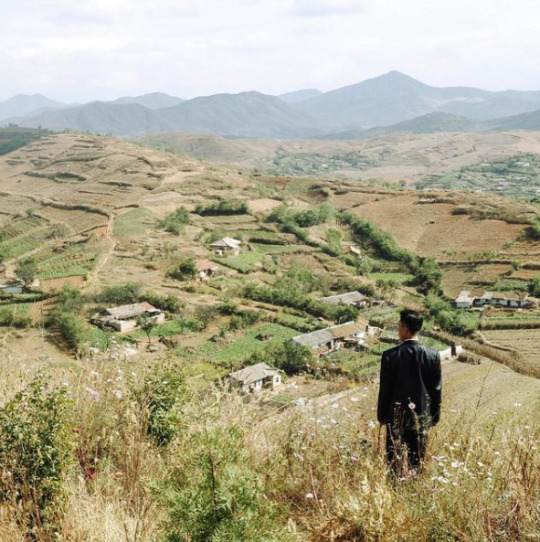
Hey, I'm back again with a very scary "tankie" post that asks you to think of North Koreans as people, and to consider their country not as a cartoonish dystopia, but as a nation that, like any other place on earth, has culture, traditions, and history.
Below is a collection of pictures from various cities and places in North Korea, along with a brief dive into some of the historical events that informs life in the so-called "hermit kingdom."
Warning: very long post
Kaesong, the historic city
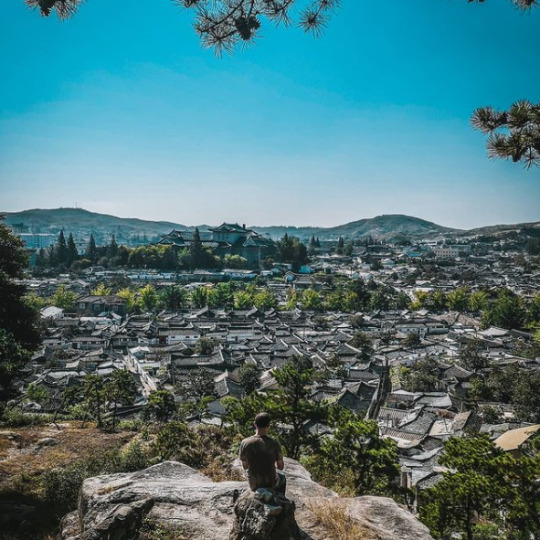
Beginning this post with Kaesong, one of the oldest cities in Korea. It's also one of the few major cities in the DPRK (i.e. "North Korea") that was not completely destroyed during the Korean war.
Every single city you'll see from this point on were victims of intense aerial bombardments from the U.S. and its allies, and had to be either partially or completely rebuilt after the war.
From 1951 to 1953, during what has now become known as the "forgotten war" in the West, the U.S. dropped 635,000 tons of bombs over Korea — most of it in the North, and on civilian population centers. An additional 32,000 tons of napalm was also deployed, engulfing whole cities in fire and inflicting people with horrific burns:
For such a simple thing to make, napalm had horrific human consequences. A bit of liquid fire, a sort of jellied gasoline, napalm clung to human skin on contact and melted off the flesh. Witnesses to napalm's impact described eyelids so burned they could not be shut and flesh that looked like "swollen, raw meat." - PBS
Ever wondered why North Koreans seem to hate the U.S so much? Well...
Keep in mind that only a few years prior to this, the U.S. had, as the first and only country in the world, used the atomic bomb as a weapon of war. Consider, too, the proximity between Japan and Korea — both geographically and as an "Other" in the Western imagination.
As the war dragged on, and it became clear the U.S. and its allies would not "win" in any conventional sense, the fear that the U.S. would resort to nuclear weapons again loomed large, adding another frightening dimension to the war that can probably go a long way in explaining the DPRK's later obsession with acquiring their own nuclear bomb.
But even without the use of nuclear weapons, the indiscriminate attack on civilians, particularly from U.S. saturation bombings, was still horrific:
"The number of Korean dead, injured or missing by war’s end approached three million, ten percent of the overall population. The majority of those killed were in the North, which had half of the population of the South; although the DPRK does not have official figures, possibly twelve to fifteen percent of the population was killed in the war, a figure close to or surpassing the proportion of Soviet citizens killed in World War II" - Charles K. Armstrong
On top of the loss of life, there's also the material damage. By the end of the war, the U.S. Air Force had, by its own estimations, destroyed somewhere around 85% of all buildings in the DPRK, leaving most cities in complete ruin. There are even stories of U.S. bombers dropping their loads into the ocean because they couldn't find any visible targets to bomb.
What you'll see below of Kaesong, then, provides both a rare glimpse of what life in North Korea looked like before the war, and a reminder of what was destroyed.
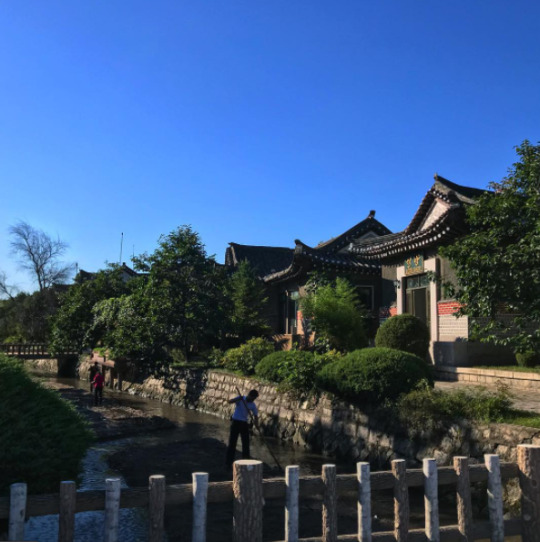
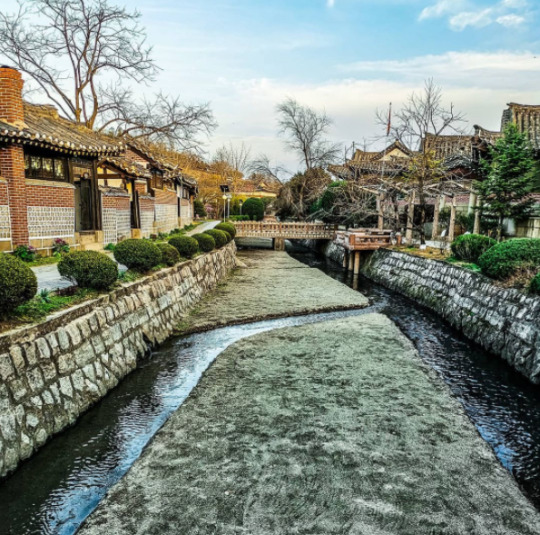
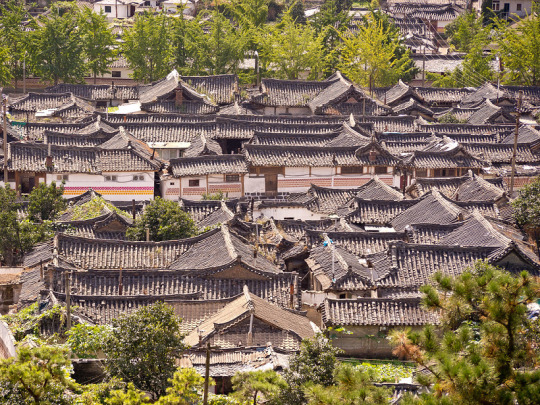
Kaesong's main street, pictured below.
Due the stifling sanctions imposed on the DPRK—which has, in various forms and intensities, been in effect since the 1950s—car ownership is still low throughout the country, with most people getting around either by walking or biking, or by bus or train for longer distances.
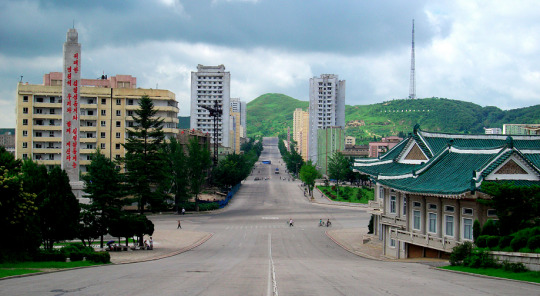
Kaesong, which is regarded as an educational center, is also notable for its many Koryŏ-era monuments. A group of twelve such sites were granted UNESCO world heritage status in 2013.
Included is the Hyonjongnung Royal Tomb, a 14th-century mausoleum located just outside the city of Kaesong.
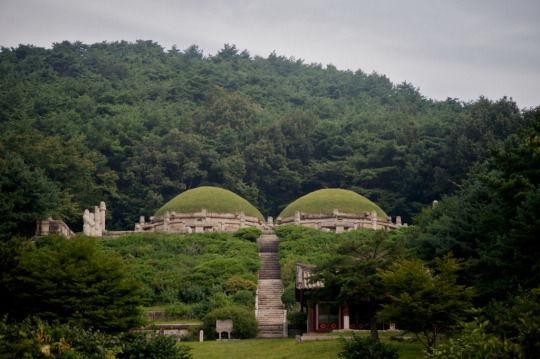
One of the statues guarding the tomb.
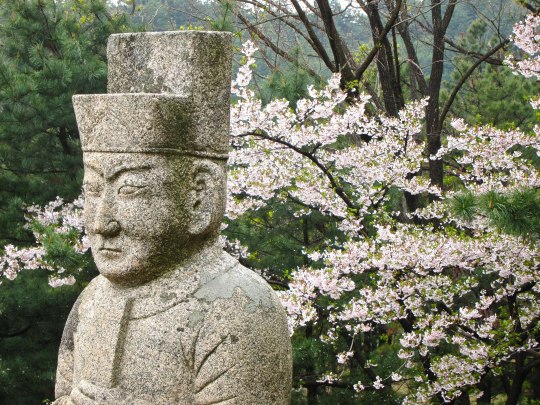
Before moving on the other cities, I also wanted to showcase one more of the DPRK's historical sites: Pohyonsa, a thousand-year-old Buddhist temple complex located in the Myohyang Mountains.
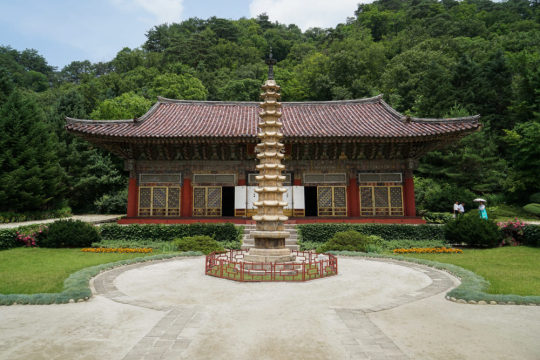
Like many of DPRK's historic sites, the temple complex suffered extensive damage during the Korean war, with the U.S. led bombings destroying over half of its 24 pre-war buildings.
The complex has since been restored and is in use today both as a residence for Buddhist monks, and as a historic site open to visitors.
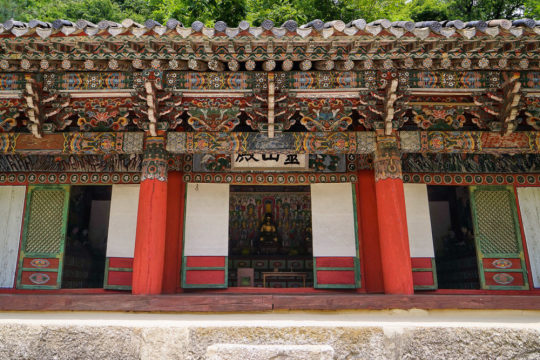
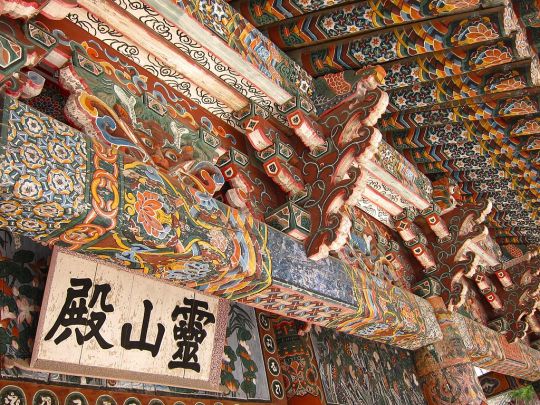
Hamhung, the second largest city in the DPRK.
A coastal city located in the South Hamgyŏng Province. It has long served as a major industrial hub in the DPRK, and has one of the largest and busiest ports in the country.
Hamhung, like most of the coastal cities in the DPRK, was hit particularly hard during the war. Through relentless aerial bombardments, the US and its allies destroyed somewhere around 80-90% percent of all buildings, roads, and other infrastructure in the city.
Now, more than seventy years later, unexploded bombs, mortars and pieces of live ammunition are still being unearthed by the thousands in the area. As recently as 2016, one of North Korea's bomb squads—there's one in every province, faced with the same cleanup task—retrieved 370 unexploded mortar rounds... from an elementary school playground.
Experts in the DPRK estimate it will probably take over a hundred years to clean up all the unexploded ordnance—and that's just in and around Hamhung.
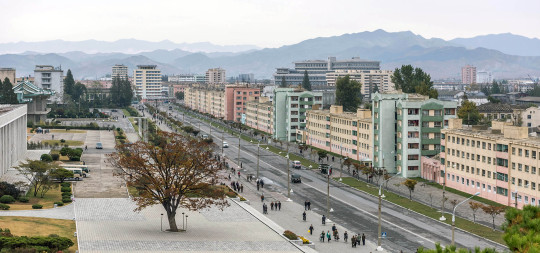
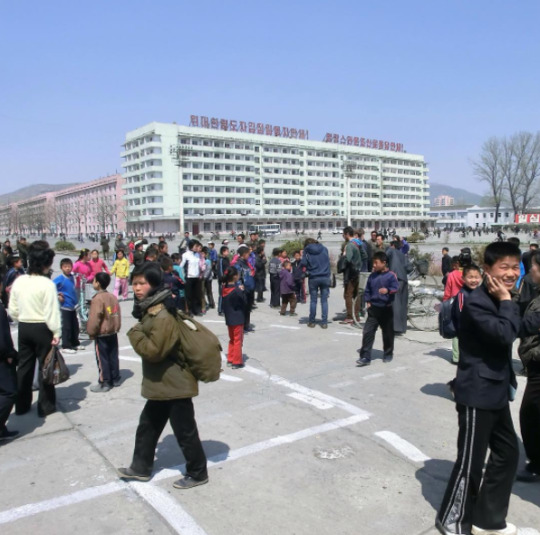
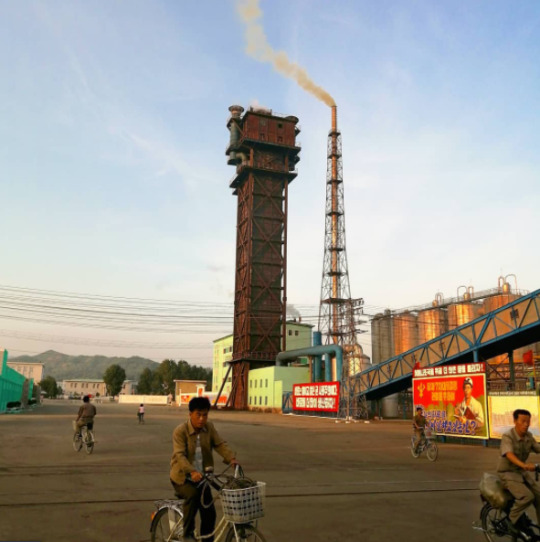
Hamhung's fertilizer plant, the biggest in North Korea.
When the war broke out, Hamhung was home to the largest nitrogen fertilizer plant in Asia. Since its product could be used in the creation of explosives, the existence of the plant is considered to have made Hamhung a target for U.S. aggression (though it's worth repeating that the U.S. carried out saturation bombings of most population centers in the country, irrespective of any so-called 'military value').
The plant was immediately rebuilt after the war, and—beyond its practical use—serves now as a monument of resistance to U.S. imperialism, and as a functional and symbolic site of self-reliance.
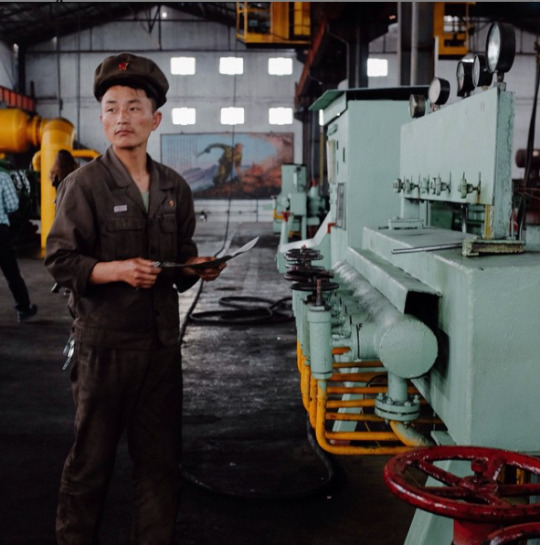
Chongjin, the third largest city in the DPRK.
Another coastal city and industrial hub. It underwent a massive development prior to the Korean war, housing around 300,000 people by the time the war broke out.
By 1953, the U.S. had destroyed most of Chongjin's industry, bombed its harbors, and killed one third of the population.
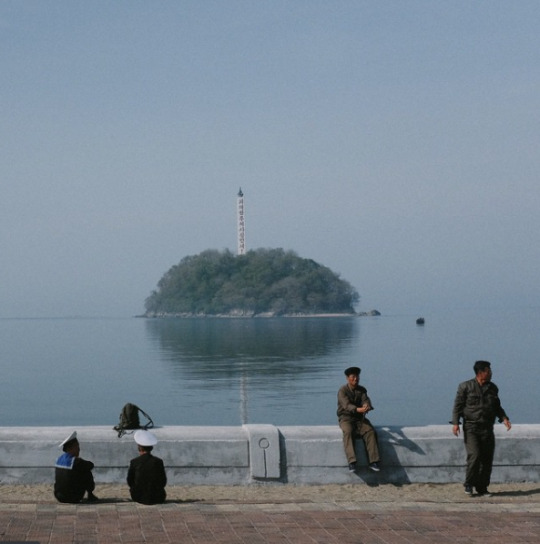
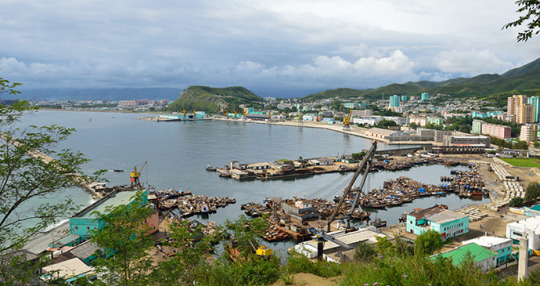
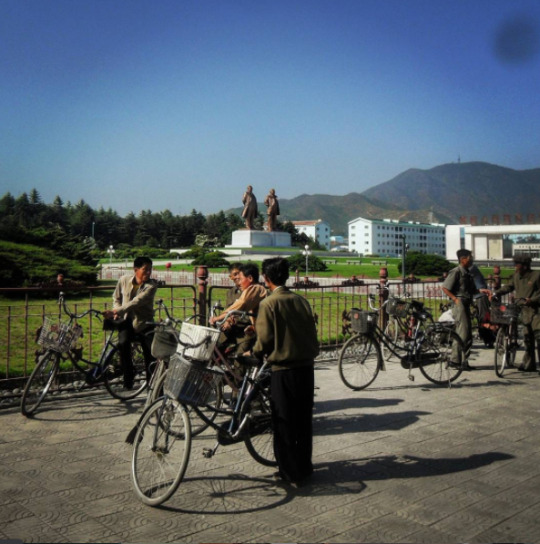
Wonsan, a rebuilt seaside city.
The city of Wonsan is a vital link between the DPRK's east and west coasts, and acts today as both a popular holiday destination for North Koreans, and as a central location for the country's growing tourism industry.
Considered a strategically important location during the war, Wonsan is notable for having endured one of the longest naval blockades in modern history, lasting a total of 861 days.
By the end of the war, the U.S. estimated that they had destroyed around 80% of the city.
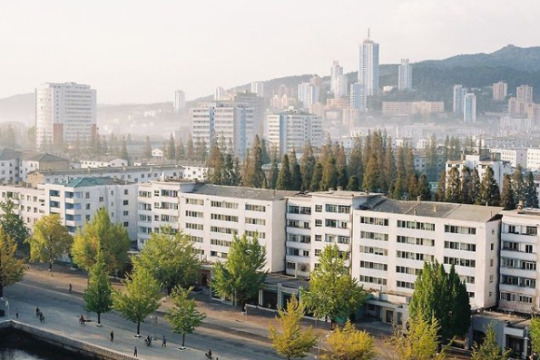
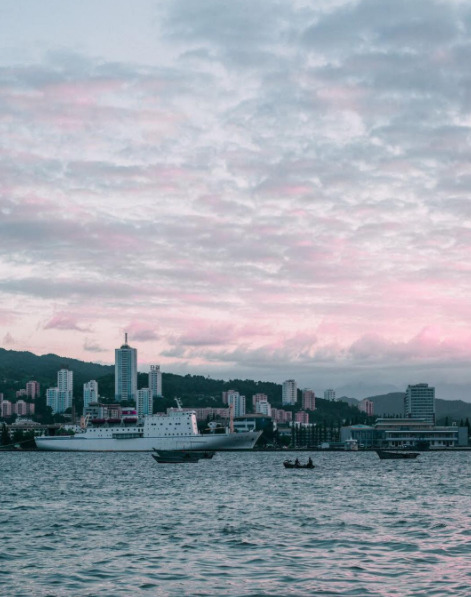
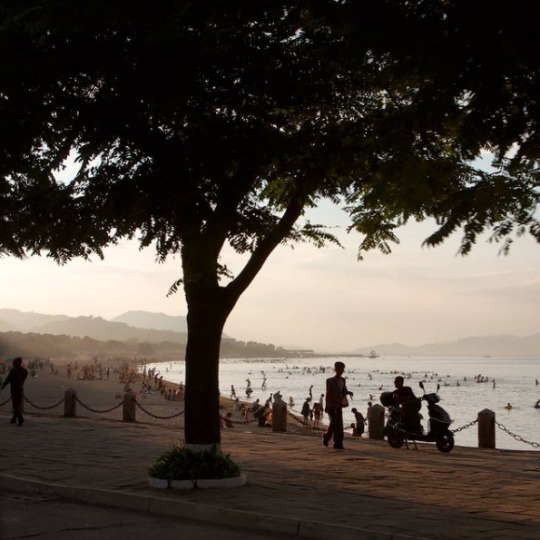
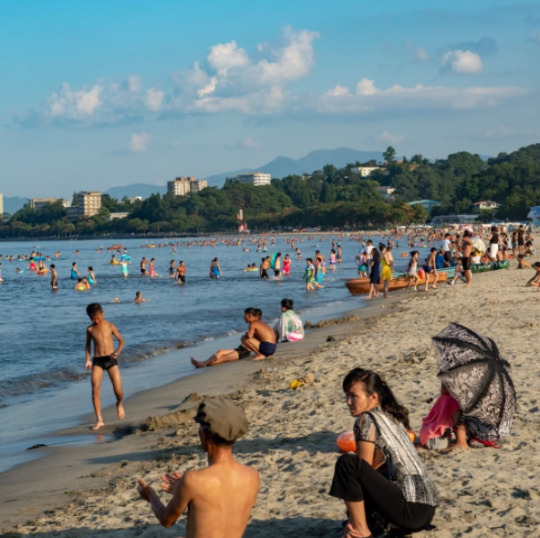
Masikryong Ski Resort, located close to Wonsan. It opened to the public in 2014 and is the first, I believe, that was built with foreign tourists in mind.
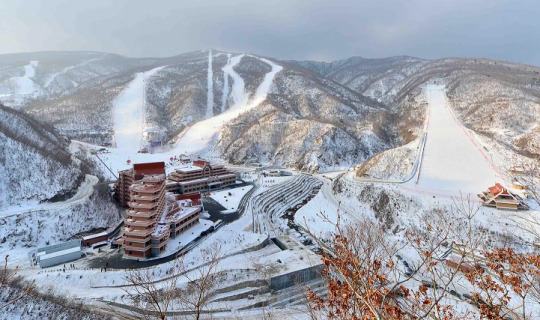
Sariwon, another rebuilt city
One of the worst hit cities during the Korean War, with an estimated destruction level of 95%.
I've written about its Wikipedia page here before, which used to mockingly describe its 'folk customs street'—a project built to preserve old Korean traditions and customs—as an "inaccurate romanticized recreation of an ancient Korean street."
No mention, of course, of the destruction caused by the US-led aerial bombings, or any historical context at all that could possibly even hint at why the preservation of old traditions might be particularly important for the city.
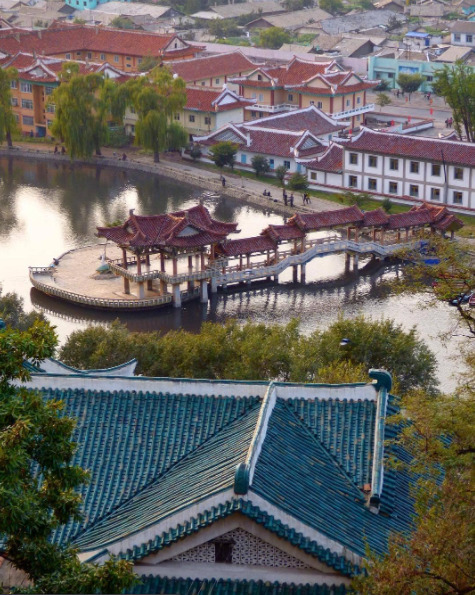
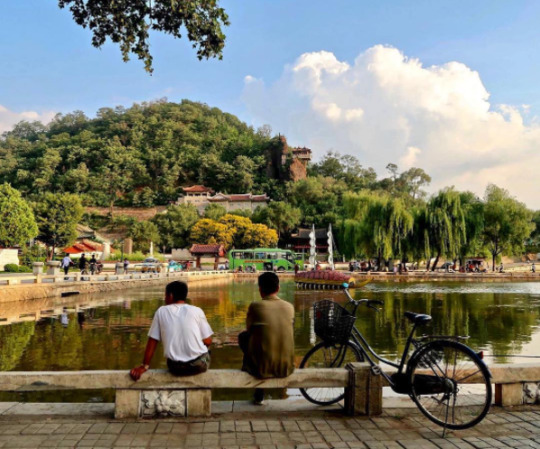
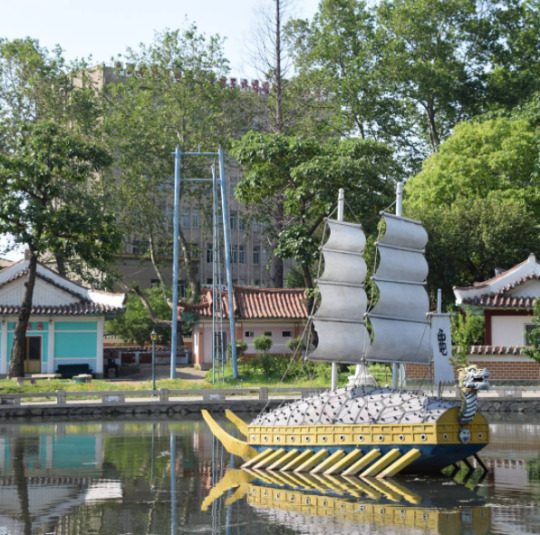
Life outside of the towns and cities
In the rural parts of the DPRK, life primarily revolves around agriculture. As the sanctions they're under make it difficult to acquire fuel, farming in the DPRK relies heavily on manual labour, which again, to avoid food shortages, requires that a large portion of the labour force resides in the countryside.
Unlike what many may think, the reliance on manual labour in farming is a relatively "new" development. Up until the crisis of the 1990s, the DPRK was a highly industrialized nation, with a modernized agricultural system and a high urbanization rate. But, as the access to cheap fuel from the USSR and China disappeared, and the sanctions placed upon them by Western nations heavily restricted their ability to import fuel from other sources, having a fuel-dependent agricultural industry became a recipe for disaster, and required an immediate and brutal restructuring.
For a more detailed breakdown of what lead to the crisis in the 90s, and how it reshaped the DPRKs approach to agriculture, check out this article by Zhun Xu.
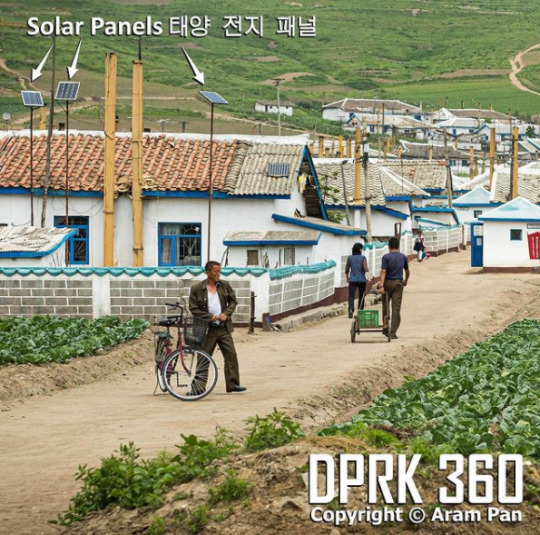
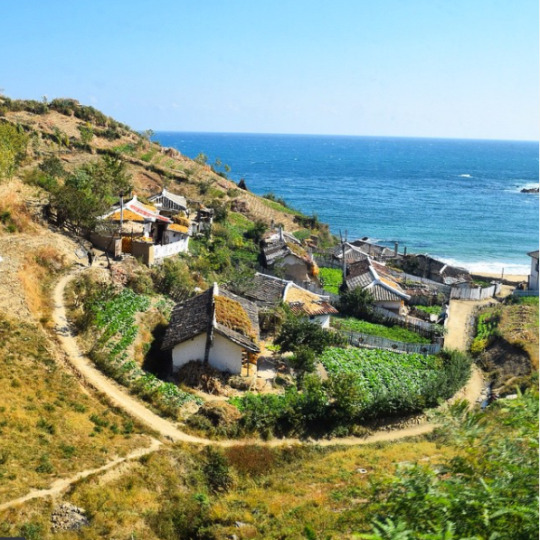
Some typical newly built rural housing, surrounded by farmland.
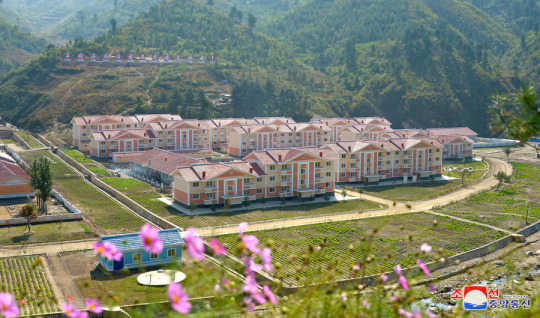
Tumblr only allows 20 pictures per post, but if you want to see more pictures of life outside Pyongyang, check out this imgur album.
#dprk#north korea#i've had this post unfinished in drafts for almost a year#also sorry about the spelling and potential formatting issues it's a nightmare to edit at this point#it was literally just meant to be a collection of picture and then the writing just sort of happened#enjoy the brief heritageposts history lesson i guess
7K notes
·
View notes
Note
I’m sorry but how can you be so proud of yourself for taking this moment to write an essay that boils down to “Don’t bother engaging in collective action, you should just do what makes you feel good with your friends :)”
Like, there is no world in which going to a concert advances a cause more than participating in a union or political party. How can you be so detached from historical and material reality? Nobody who advocates for political organization is saying “also stop spending time with your friends and interfacing with your community.”
Have fun limiting your “organizing” to shallow little playtime in nice cozy Switzerland while the rest of us try to address injustices and atrocities through collective action. I hope you decide to join us, eventually.
the essay does not actually boil down to this, at least this definitely isn't the point of it. this would be a very fair critique if that actually were what im trying to say but it just straight up isn't.
my essay focuses on how just saying to "get organized" or "join xy org" doesn't really help most people actually find their space in a movement, it's about how building friendships both within and outside the movement is important for setting foot in it and how people's morale tends to be forgotten in some political orgs (which i find sad) which leads to burnout and orgs that fall apart.
i think my essay makes it pretty clear that collective action is the goal but focuses on what's also important in the here and now, leaving people helpless and hopeless helps no movement.
i do a lot of things in radical spaces that i don't publicly talk about online, to just assume i have no actual involvement in any on the ground stuff just because you misread my essay and disagree with it is frankly insulting. you are free to disagree with me, i don't think anyone will ever fully agree on theory anyways, but at least try to be honest in your engagement with what i wrote.
2K notes
·
View notes
Text
10 DAY BLOWOUT SALE ON OUR RECLAIMED REDWOOD LUMBER! 7/8" X 8" ONLY $2.99 PER SQ FT!!!!!! $1.00 OFF PER SQ FT!!

View On WordPress
#Aged Timber Second Life Wood Salvage Yards Building with Character Sustainable Design#Reclaimed Redwood#Recycled Wood Products Vintage Lumber Green Building Architectural Salvage Upcycled Wood Salvaged Building Materials Historic Wood#Redwood Reuse Projects#Redwood Timber#Salvaged Lumber#Weathered Wood Aged Timber Second Life Wood Salvage Yards Building with Character Sustainable Design
0 notes
Text
So You Want to Read More about Chinese Mythos: a rough list of primary sources
"How/Where can I learn more about Chinese mythology?" is a question I saw a lot on other sites, back when I was venturing outside of Shenmo novel booksphere and into IRL folk religions + general mythos, but had rarely found satisfying answers.
As such, this is my attempt at writing something past me will find useful.
(Built into it is the assumption that you can read Chinese, which I only realized after writing the post. I try to amend for it by adding links to existing translations, as well as links to digitalized Chinese versions when there doesn't seem to be one.)
The thing about all mythologies and legends is that they are 1) complicated, and 2) are products of their times. As such, it is very important to specify the "when" and "wheres" and "what are you looking for" when answering a question as broad as this.
-Do you want one or more "books with an overarching story"?
In that case, Journey to the West and Investiture of the Gods (Fengshen Yanyi) serve as good starting points, made more accessible for general readers by the fact that they both had English translations——Anthony C. Yu's JTTW translation is very good, Gu Zhizhong's FSYY one, not so much.
Crucially, they are both Ming vernacular novels. Though they are fictional works that are not on the same level of "seriousness" as actual religious scriptures, these books still took inspiration from the popular religion of their times, at a point where the blending of the Three Teachings (Buddhism, Daoism, Confucianism) had become truly mainstream.
And for FSYY specifically, the book had a huge influence on subsequent popular worship because of its "pantheon-building" aspect, to the point of some Daoists actually putting characters from the novel into their temples.
(Vernacular novels + operas being a medium for the spread of popular worship and popular fictional characters eventually being worshipped IRL is a thing in Ming-Qing China. Meir Shahar has a paper that goes into detail about the relationship between the two.)
After that, if you want to read other Shenmo novels, works that are much less well-written but may be more reflective of Ming folk religions at the time, check out Journey to the North/South/East (named as such bc of what basically amounted to a Ming print house marketing strategy) too.
-Do you want to know about the priestly Daoist side of things, the "how the deities are organized and worshipped in a somewhat more formal setting" vs "how the stories are told"?
Though I won't recommend diving straight into the entire Daozang or Yunji Qiqian or some other books compiled in the Daoist text collections, I can think of a few "list of gods/immortals" type works, like Liexian Zhuan and Zhenling Weiye Tu.
Also, though it is much closer to the folk religion side than the organized Daoist side, the Yuan-Ming era Grand Compendium of the Three Religions' Deities, aka Sanjiao Soushen Daquan, is invaluable in understanding the origins and evolutions of certain popular deities.
(A quirk of historical Daoist scriptures is that they often come up with giant lists of gods that have never appeared in other prior texts, or enjoy any actual worship in temples.)
(The "organized/folk" divide is itself a dubious one, seeing how both state religion and "priestly" Daoism had channels to incorporate popular deities and practices into their systems. But if you are just looking at written materials, I feel like there is still a noticeable difference.)
Lastly, if you want to know more about Daoist immortal-hood and how to attain it: Ge Hong's Baopuzi (N & S. dynasty) and Zhonglv Chuandao Ji (late Tang/Five Dynasties) are both texts about external and internal alchemy with English translations.
-Do you want something older, more ancient, from Warring States and Qin-Han Era China?
Classics of Mountains and Seas, aka Shanhai Jing, is the way to go. It also reads like a bestiary-slash-fantastical cookbook, full of strange beasts, plants, kingdoms of unusual humanoids, and the occasional half-man, half-beast gods.
A later work, the Han-dynasty Huai Nan Zi, is an even denser read, being a collection of essays, but it's also where a lot of ancient legends like "Nvwa patches the sky" and "Chang'e steals the elixir of immortality" can be first found in bits and pieces.
Shenyi Jing might or might not be a Northern-Southern dynasties work masquerading as a Han one. It was written in a style that emulated the Classics of Mountains and Seas, and had some neat fantastic beasts and additional descriptions of gods/beasts mentioned in the previous 2 works.
-Do you have too much time on your hands, a willingness to get through lot of classical Chinese, and an obsession over yaoguais and ghosts?
Then it's time to flip open the encyclopedic folklore compendiums——Soushen Ji (N/S dynasty), You Yang Za Zu (Tang), Taiping Guangji (early Song), Yijian Zhi (Southern Song)...
Okay, to be honest, you probably can't read all of them from start to finish. I can't either. These aren't purely folklore compendiums, but giant encyclopedias collecting matters ranging from history and biography to medicine and geography, with specific sections on yaoguais, ghosts and "strange things that happened to someone".
As such, I recommend you only check the relevant sections and use the Full Text Search function well.
Pu Songling's Strange Tales from a Chinese Studios, aka Liaozhai Zhiyi, is in a similar vein, but a lot more entertaining and readable. Together with Yuewei Caotang Biji and Zi Buyu, they formed the "Big Three" of Qing dynasty folktale compendiums, all of which featured a lot of stories about fox spirits and ghosts.
Lastly...
The Yuan-Ming Zajus (a sort of folk opera) get an honorable mention. Apart from JTTW Zaju, an early, pre-novel version of the story that has very different characterization of SWK, there are also a few plays centered around Erlang (specifically, Zhao Erlang) and Nezha, such as "Erlang Drunkenly Shot the Demon-locking Mirror". Sadly, none of these had an English translation.
Because of the fragmented nature of Chinese mythos, you can always find some tidbits scattered inside history books like Zuo Zhuan or poetry collections like Qu Yuan's Chuci. Since they aren't really about mythology overall and are too numerous to cite, I do not include them in this post, but if you wanna go down even deeper in this already gigantic rabbit hole, it's a good thing to keep in mind.
#chinese mythology#chinese folklore#resources#mythology and folklore#journey to the west#investiture of the gods
2K notes
·
View notes